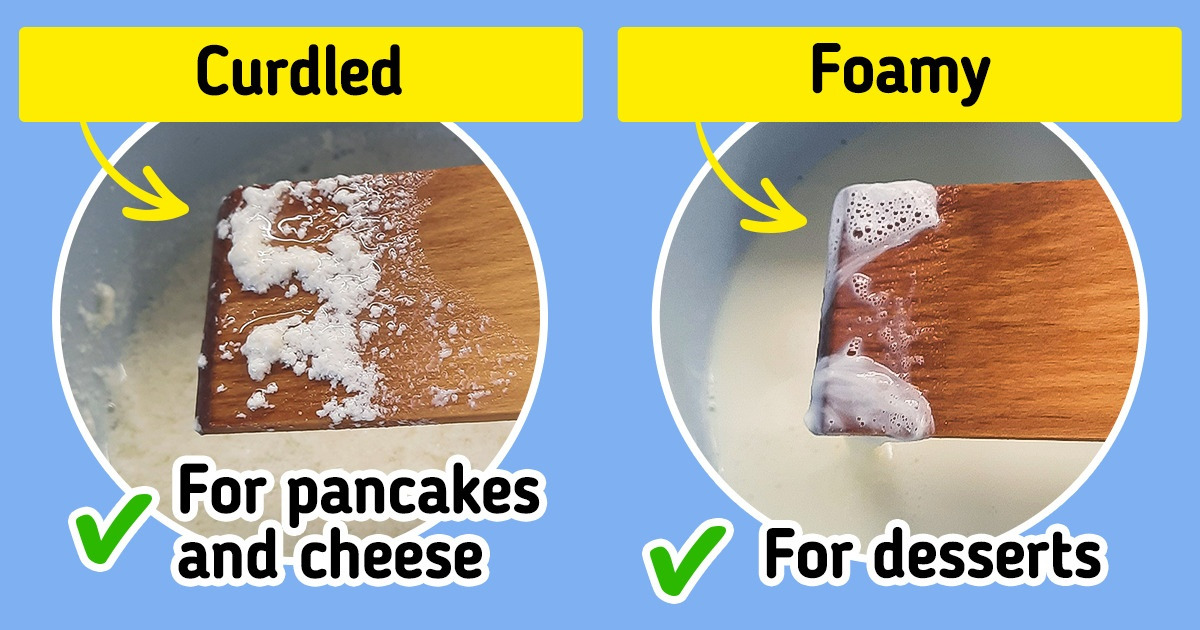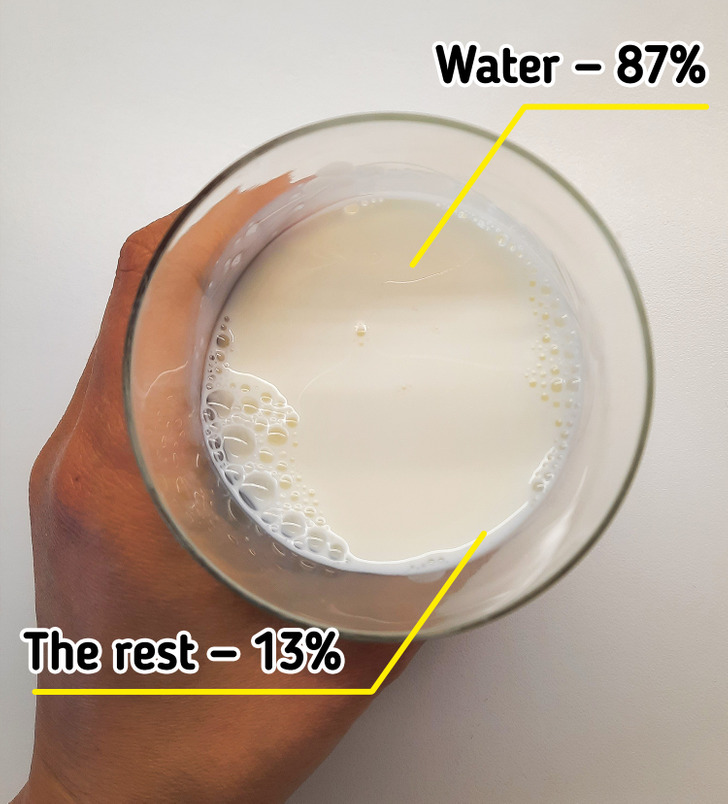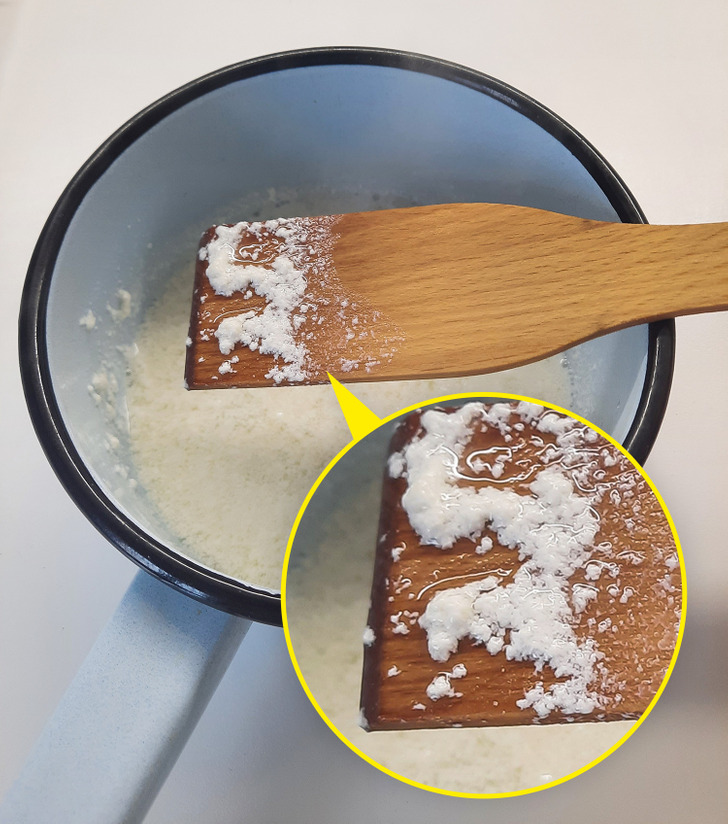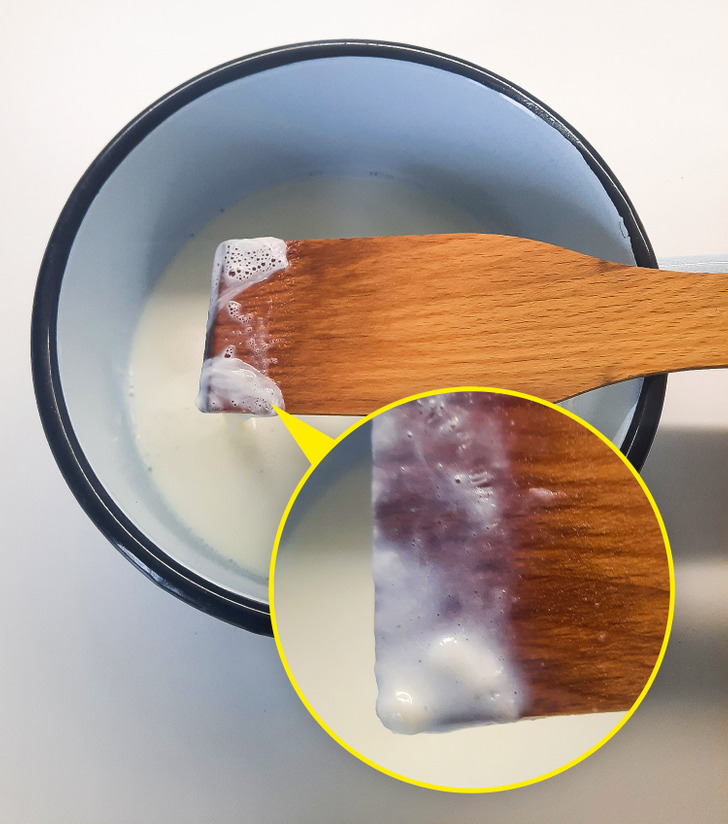Why Milk Curdles and Gets Foamy When Boiled

Curdled milk is a bad surprise, especially if you’ve just opened it and wanted to heat it up. And some people find the look of foam or film on the surface of milk very unpleasant.
We at 5-Minute Crafts want to find out what’s behind these processes and what to do to make the most use of them.
What milk is

Milk is around 87% water and the rest is fat, protein, lactose, and minerals. Milk also contains vitamins, ferments, pigments, phospholipids, and other things. The proportion of the contents in milk depends on the breed and individual features of a certain cow.
Globules of fat are the basic part of milk fat. If you leave milk in a glass, after some time, the globules will float to the surface and form a fat film with the fat-free milk under it.
- As a mechanical action, the membrane of the globules breaks and they form bigger chunks. This is how butter is made: the cream from the milk surface is collected and whipped.
- When milk is heated, gases and volatiles leave it. As the temperature rises, ferments are destroyed, protein curdles, acid is produced, and other reactions happen that change the taste of milk and its color.
- When milk is cooled down, its viscosity is increased because fat becomes solid. If frozen, milk can be stored for a long time, but it might become watery when it’s defrosted.
Why milk curdles

When the pH in milk goes down, its acidity goes up, and the protein molecules start attracting each other, which makes curdles. They go up to the milk’s surface. This process happens faster when it’s hot. To see the reaction, add lime or lemon juice into boiling milk. The acid will change the pH of milk and it will curdle. This is how cheese is produced.
Why does milk curdle when boiled?
A sudden rise in temperature forms acid in milk, so it should be heated very slowly. Additionally, milk might be going sour, and heat speeds up the reaction. A product that is a mix of different milk sources might get sour or it might have been retrieved from a sick cow (so there were bacteria that changed the acidity of the milk). This is why milk that wasn’t pasteurized enough can go bad too.
✅ Tip: When you’re not sure if milk is fresh, boil a little of it first. If it curdles, put aside the rest and let it get sour to be used to make kefir or pancakes.
Why foam appears on milk

The surface of milk, cream, and other milk-containing products (like cocoa) might have a white sticky film on them when heated. This is because the protein loses its natural features when it’s heated and then they coagulate with the milk fat. This is what produces the foam and the film.
The foam can be ingested, it’s specially made to make different meals in various cuisines, such as kaymak, which can be served as an addition to desserts and main courses.